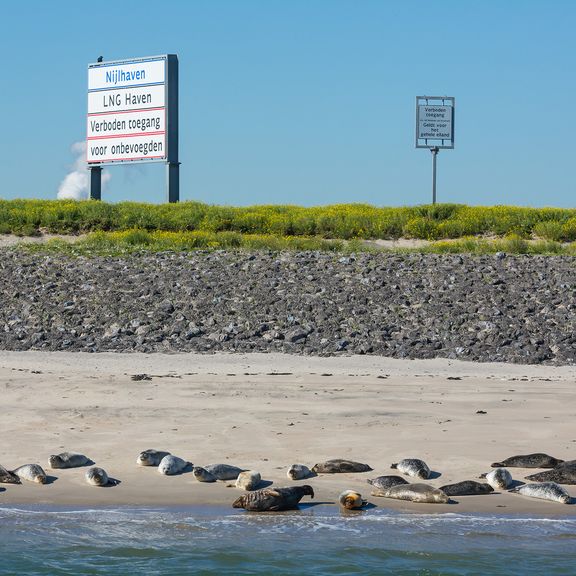
Nature in the port
Economic progress is important but may never be at the expense of nature, the environment, and the living environment of the port industrial area. The port of Rotterdam is a place of industry as well as of nature. The Port Authority is careful about nature and devotes itself actively to conserving nature and helping it develop.

Discover nature in the port
It is surprising how much nature the port of Rotterdam has to offer, like the Green Port tide park, for instance, or nature on Landtong Rozenburg, the Bird Valley or Geuzenbos, but also at unexpected locations right in the midst of industry. It is home to orchids and free-roaming Highland cattle. Seals and pipistrelle bats can also be found in the area. You can even discover protected species there, such as the natterjack toad and the fen orchid.
WILD PORT OF EUROPE
The ports of Rotterdam and Moerdijk will not be at the front of your mind when you think about nature. Yet, these industrialised areas inspired the makers of Wild Port of Europe to make a film about the resilience of nature. The film will be on at the cinemas as from 12 October. It shows the surprising wealth, resilience and dynamic of nature in the ports of Rotterdam and Moerdijk. It is an ode to the magnificent flora and fauna developing in the area and a visual tribute to the largest and most impressive port and industrial area of Europe.
Important ecosystem
The port of Rotterdam includes many hectares of nature and is a major ecosystem with over 200 unique plant and animal species. Nature values and biodiversity need to be taken into account very seriously in the development of the port. This calls for professional management and well-considered choices. When developing port areas or building infrastructure, we closely look at the quality of the living environment, we work on developments with an eye for nature, and we prevent any damage to protected nature – and compensate for it where this is necessary.
Nature-friendly management
In the port area, we apply ecological management, seeking to achieve a healthy balance between plants, humans and animals. We do this by seeing to it that the habitat for crucial species is safeguarded, that problem species are controlled, and that protected and threatened flora and fauna on land and under water are monitored. Examples include nature-friendly banks and using ecological mowing management.
Problem species prevention
Exotic or foreign species are plants or animals which are taken outside their original and natural habitat. By their mere presence, some species, like the Japanese Persicaria, are a threat to the growth of native species, or they damage constructions and paving. The Port Authority does its utmost to keep problem species under control to restore the natural ecosystem.
Connecting nature
The geographical location of the port in a river delta on the coast makes the port the perfect biotope for pioneers and coast-bound species, such as waders, natterjack toads, various orchids, and migratory fish, like eel and salmon. These plants and animals quickly spread from one area to another. ‘Ecological stepping-stones’ have been constructed at strategic locations in the port. Via these locations, like verges, pipeline corridors, and sites not yet issued, plants and animals can move.